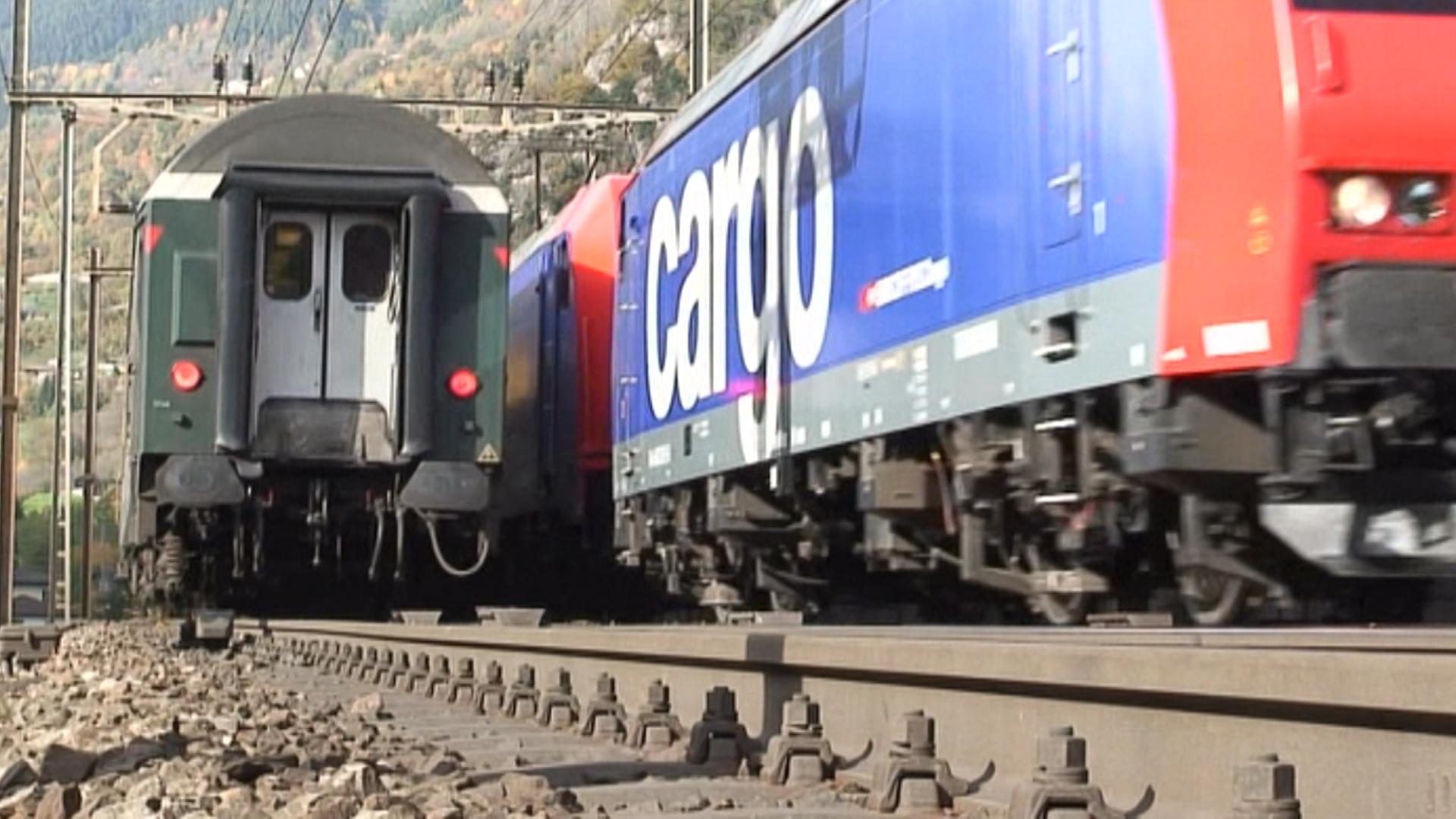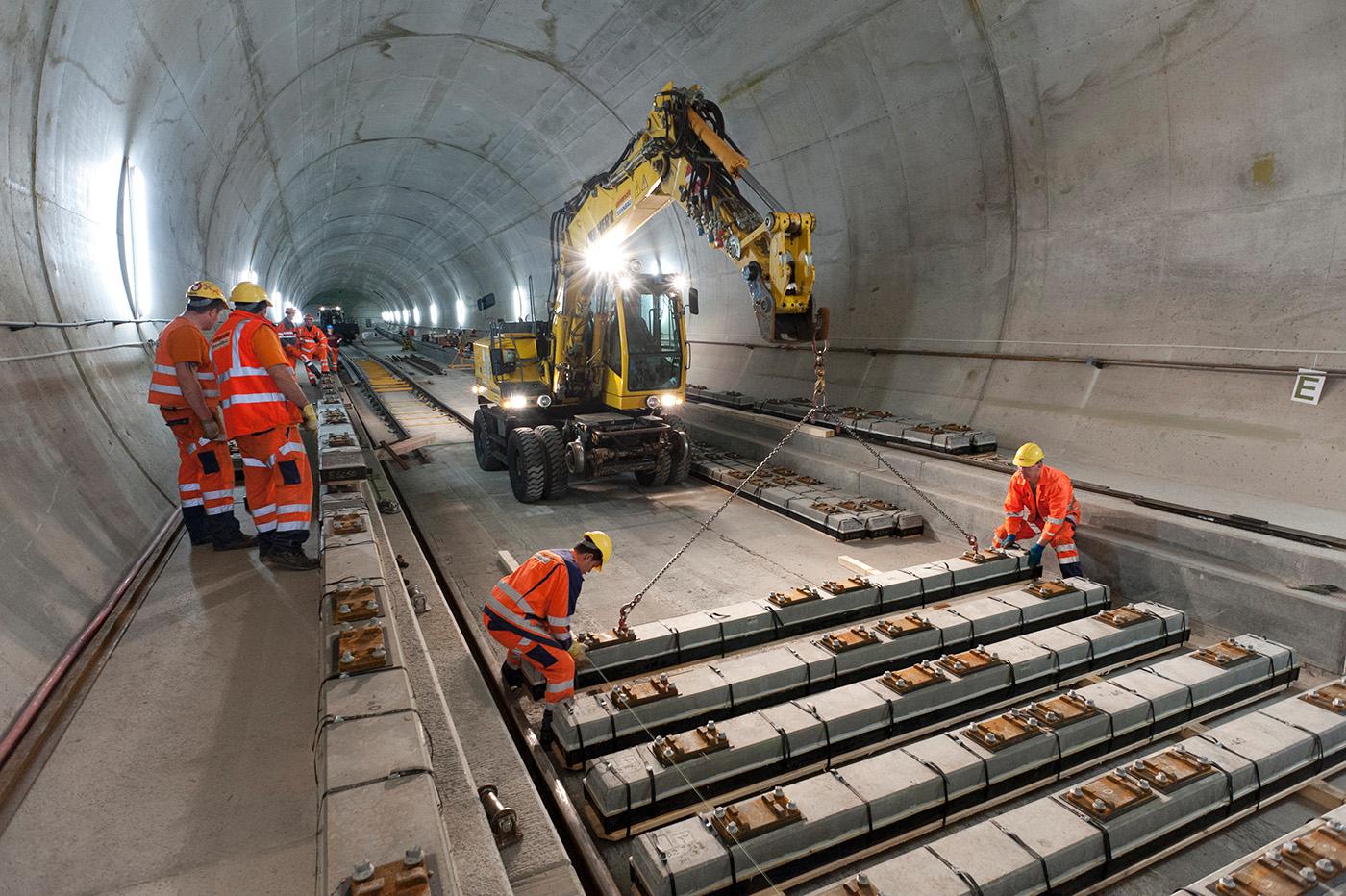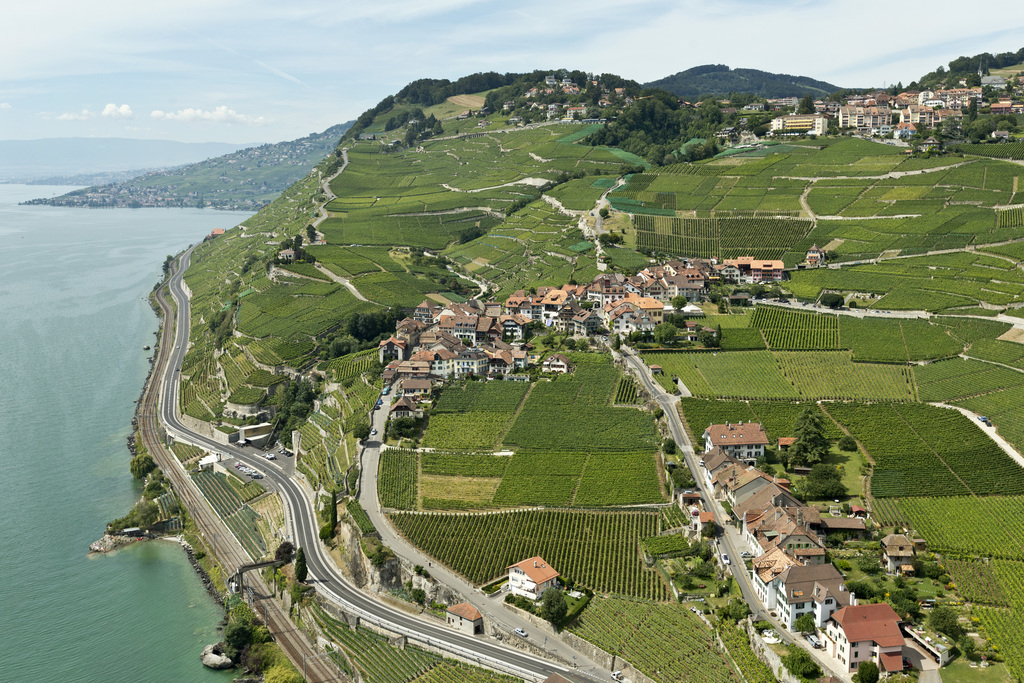What next for the Gotthard’s historic railway?

The old Gotthard Railway line is a major European rail traffic artery. But that will change in 2016 with the opening of the new Gotthard Base Tunnel. The long-term future of this feat of Alpine engineering is uncertain and plans for a UNESCO bid have been derailed for now.
Opened in 1882 – with engineers having blasted away part of its route through rock – the Gotthard Railway links northern and southern Switzerland and, further away, Germany and Italy.
But with modern times, and more freight and passengers, came calls for a new Gotthard route with fewer climbs and spirals. A key part: the Gotthard ultramodern, flatter base tunnelExternal link, which at 57 km will become the longest in the world. It will also cut down the travel distance by 40km (see map).
What, then, will become of the old railway? One idea has been that it should become part of a UNESCO World Heritage siteExternal link. The country already has 11 sites deemed by United Nations cultural body to be “of outstanding value to humanity”. There are also plans to submit eight customs for UNESCO’s ‘intangible’ heritage list.

More
Yodelling, design and carnival: heritage candidates?
The government, however, has decided against this course of action. In a statementExternal link in October to accompany its report into the future of Gotthard Railway, it said that the line would be maintained as a “service line for the region and as a tourist link”, but a World Heritage status candidacy for the railway and surrounding region was, for now, “without a chance”.
Not clear
“The future of the Gotthard mountain railway is not very clear at the moment because it is only after the opening of the base tunnel that we will see what the demand will be on the line over the mountain,” Federal Transport Office spokesman Andreas Windlinger explained to swissinfo.ch.
An assessment will be made in 2025 in terms of passenger and freight use. This will influence whether long-term investment should be made into the railway – and so decide if UNESCO candidacy is even on the cards.
But Kilian ElsasserExternal link, a historian and long-time support of UNESCO status, says “a lot might happen in the meantime”. “It could be that they say at some point, ‘oh we have to restore the tunnel and it’s too expensive and so we’ll close down the line’”.
World Heritage status would help develop the region in tourism terms, such as with the marketing of hotels or the selling of Alpine cheese, he pointed out.
Swiss symbol
“The railway line is a kind of symbol of Switzerland: it goes through the Alps. It also shows Switzerland’s industrial and intelligence capacity, that we were able to build such a line,” he told swissinfo.ch.
It has a historical significance too: “In the 19th century it was very important for Germany and Italy that there was a direct railway connection between them and that it went through a neutral country. So Switzerland gained a very important role in Europe.”

More
Gotthard tunnel sparks freight traffic row
For his part, Isidor Baumann, the parliamentarian from the central canton of Uri, through which the line passes, and whose intervention had started the report process, told Swiss public radio that he was pleased that the railway was guaranteed for a further ten years, calling it an “important sign for Uri and its tourism”. But he cautioned that it now it was up to the canton to use the time wisely to push tourism and the need for long-term public transport in the region.
There are some open questions about the line: all the steel bridges were replaced between the 1920s-1950s and some argue they are not historic. Unsightly noise protection walls have also been added due to the 100 freight trains every night which upset the locals. Elsasser says these could be taken away after 2016. But this will need investment.
A UNESCO model
Switzerland already has one UNESCO rail link, the spectacular Albula and Bernina lines – and surrounding landscape – of the Rhaetian RailwayExternal link, which gained World Heritage status in 2008. Located in the mountainous eastern canton of Graubünden, it is just one of three rail links to have the label worldwide, the others being in IndiaExternal link and AustriaExternal link.
Roman Cathomas, product manager for UNESCO World Heritage at the Rhaetian Railway, says the UNESCO status, granted after a complex and multi-layered process, brings certain duties. “The Rhaetian Railway has become more aware and more sustainable in its dealings with the heritage site in its network so that it maintains and preserves it in another way,” he said.
There aren’t any reliable figures for the added economic value the status has brought, he said, but there were “indicators that the increase in frequency of passengers on the world heritage lines is a little stronger than on the other lines”.
“We are, however, convinced that the UNESCO World Heritage label helps significantly increase the profile of our panorama trains the Bernina and the Glacier Express, as well as the Rhaetian Railway.”
In terms of duties, renovation on the lines, which run through twisting tunnels and soaring viaducts and whose infrastructure is more than 100 years old, is more complex and expensive than if done without taking world heritage preservation aspects into consideration, he added. Rhaetian Railway engineers work closely with the government and canton to find the best solutions.
Room for two
Elsasser argues there is room for a second world heritage railway in Switzerland.
But changing the government’s opinion about UNESCO status will need some political and public pressure, he says. He hopes the Gotthard Base Tunnel’s opening will bring the historic railway back into people’s consciousness.
“Its disadvantage is that everyone knows the Gotthard and they think they know everything,” he said. “I don’t think our generation realises the importance of this railway.”
UNESCO sites in Switzerland
Cultural:
St Gallen Abbey (1983)
Benedictine Convent of St John at Müstair (1983)
Old City of Bern (1983)
Three Castles, Defensive Wall and Ramparts of Bellinzona (2000)
Lavaux, Vineyard Terraces (2007)
Rhaetian Railway in the Albula/Bernina Landscapes (2008)
La Chaux-de-Fonds/Le Locle, watchmaking town planning (2009)
Prehistoric Pile dwellings around the Alps (2011)
Natural:
Swiss Alps Jungfrau-Aletsch (2001)
Monte San Giorgio (2003)
Swiss Tectonic Area Sardona (2008)

In compliance with the JTI standards
More: SWI swissinfo.ch certified by the Journalism Trust Initiative












You can find an overview of ongoing debates with our journalists here . Please join us!
If you want to start a conversation about a topic raised in this article or want to report factual errors, email us at english@swissinfo.ch.